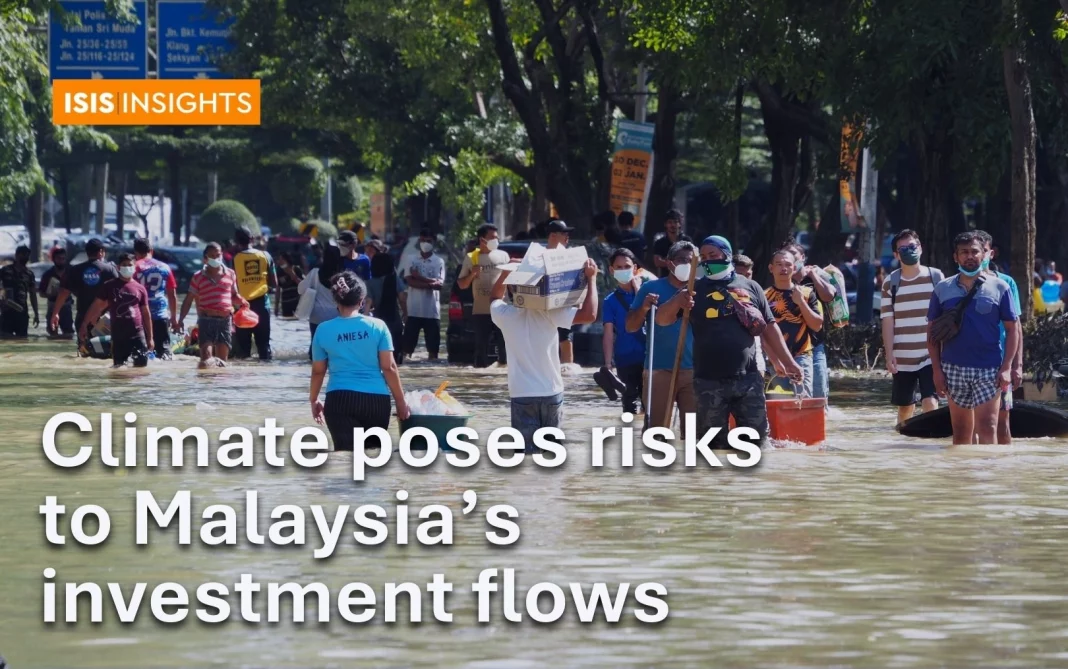Nation should look at science to forecast and adapt to disasters
Malaysia is fast becoming a regional magnet for foreign investments but escalating climate risk threatens to derail this trajectory.
How, precisely? Despite a wave of recent climate-related disasters, Malaysia has yet to conduct comprehensive studies to assess systematically its climate risks, thus putting the economy, environment and society at risk.
In this case, data act as the first step towards understanding climate risks. Without data, decision-makers face many unknowns, limiting their ability to implement preventive strategies vis-à-vis disasters.
With billions of ringgits in capital depending on the ability to withstand increasingly severe climate disruptions, the continued absence of substantive climate-risks assessments and reliable data leaves a critical gap in Malaysia’s adaptation strategy.
With each unassessed and compounded risk, Malaysia’s reputation as a stable investment destination is at stake, potentially exposing investors to losses and eroding confidence in its long-term resilience.
Adaptation strategies
Fortunately for Malaysia, the country is set to launch the National Adaptation Plan (MyNAP) in 2026. In this regard, it is common for a climate-risk assessment to be conducted prior to the formulation of the plan to ensure that it is backed by data and science.
These assessments are typically used to evaluate the vulnerability of communities, infrastructure, economy and ecosystems to the impacts of climate change. They help guide national priorities for climate adaptation and resilience by establishing a baseline of current and emerging risks, which could inform a more targeted adaptation plan.
While this is a much-needed step in the right direction, Malaysia’s climate-risk assessment should extend beyond simply fulfilling MyNAP’s development.
First, it should be utilised more broadly to inform immediate actions for sector-specific industries. For instance, the assessment should include projections of GDP or productivity losses based on different climate scenarios. Second, it is also crucial that the process is expedited to keep pace with rapid influxes of investments, ensuring an evidence-based framework that supports investment strategies. A delay risks not only reputational damage but also the unintended consequences of increased global greenhouse gas emissions.
Balancing growth and climate resilience
Malaysia attracted more than RM329 billion in approved investments in 2023 alone. The government has also introduced numerous initiatives, such as extension of tax incentives, for foreign manufacturers relocating to Malaysia. While investments often drive growth, they usually exact a toll in carbon emissions and resource depletion. This toll is more pronounced in resource-intensive and emission-heavy sectors.
For example, the Johor-Singapore Special Economic Zone, which is set to become a major corridor attracting data centres and other large-scale developments into the state. Without strategic foresight, rapid development could compromise local ecosystems and the local community’s resilience.
This can result in a tug of war for resources, with businesses and local communities at opposing ends of the rope. The increased demand for water, for example, will cause further strains on resources that are already climate stressed, while higher demand for electricity will strain electricity grids and drive-up carbon emissions.
If Malaysia fails to strike this balance between investments and resources, the consequences could be dire with impacts on the people, environment and economy.
Essential first step
As Malaysia approaches high-income nation status, it is more obvious now that it needs granular, nation-specific climate-risk assessments with detailed insights into climate risks, covering economic losses to disaster-management needs. While MyNAP is a positive step, it is insufficient on its own to tackle complex and evolving threats.
MyNAP’s risk assessment could do more than identify vulnerabilities and show the scale of the challenges and high-priority areas that link science to policies. It could act as an essential first step to ensure that stakeholders, including governments and investors, share an understanding of physical climate risks and work cohesively on mapping out adaptation solutions.
If done comprehensively, this assessment would enable Malaysia to manage its climate risks, allowing it to capitalise on emerging opportunities in the global green economy.
For instance, the National Energy Transition Roadmap estimates that Malaysia would need up to RM1.2-1.3 trillion for its transition needs. By managing climate risks, the deployment of NETR investments will enhance effectiveness of these projects in achieving their intended goals At the same time, providing assurance to investors and mitigate any potential financial losses.
For states anticipating increased investment and rapid development, there is greater urgency to initiate independent and localised climate-risk assessments. This is particularly crucial for Johor and other investment-focused states, such as Selangor and Penang. Data from these assessments could enable more targeted and pre-emptive interventions, such as investing in flood defences and relocating at-risk communities to reduce loss and damage.
Learning from Australia, the Philippines
Unfortunately, many countries, including Malaysia, fail to understand the importance of gathering data. While the IPCC assessment reports offer valuable insights and set a global precedent, they are limited to broader regional analyses. Each country needs granular, science-based data tailored to specific risks.
Malaysia needs to bridge this knowledge gap with localised evaluation. It could draw examples from countries that have institutionalised climate-risk assessment as a fundamental part of their policy frameworks.
Australia published its National Climate Risk Assessment earlier this year and identified the extent to which its people, infrastructure, economy and landscapes are exposed and vulnerable to climate change over the rest of the century through evidence-based assessments. Through a two-stage process, the assessment elucidates information from various stakeholders and in-depth analysis of the highest priority risks to inform adaptation action and investment at all levels of government, industry and the private sector.
Closer to home, the Philippines mandated its Climate Change Commission to ensure mainstreaming of climate change in national, sectoral and local development plans through the Climate Change Act 2009. The commission then released its climate-risk assessments in stages to strengthen the early action system as one way to address extreme weather events. Here, a scientific basis enables decision-makers to develop actions in response to a changing earth.
Framing Malaysia’s climate-risk assessment
To conduct a robust climate-risk assessment, Malaysia could adapt lessons from those two countries. However, it is worth noting that it is not starting from zero. There are already various institutions working on projections and risks. But what is needed now is how to draw parallels to sectoral impacts. The most effective way is to link scientific research with policymaking, by utilising climate-focused institutions, such as the Institute of Climate Change in Universiti Kebangsaan Malaysia as well as other academia, think-tanks and civil society organisations. They need to be leveraged along with consultative panels and steering committees to spearhead similar initiatives, drawing on both academic and governmental expertise.
Other regulatory bodies taking proactive steps to address climate-risk management include Bank Negara, which issues a “Climate Risk Management and Scenario Analysis” for financial institutions to abide by.
But Malaysia still needs a more coordinated, jurisdictional intervention to advance these efforts, such as the Philippines’ mandate in its climate change act. In our case, the government must ensure that the assessments link past, current and projected future events into a coherent narrative.
These assessments must also be updated regularly to ensure they reflect the latest climate data and evolving risks to enable informed planning and decision-making.
Without investments in advanced-climate modelling and monitoring systems, investors, policymakers and the public are left navigating climate risks with insufficient information, which could lead to misdirected efforts and inefficiency.
While the country continues to pursue pro-investment policies, these must not come at the expense of the land and its people. Climate-risks assessments allow us to balance disasters – flood, drought and others – with ensuring resilience to safeguard both our planet’s future and economic stability.





